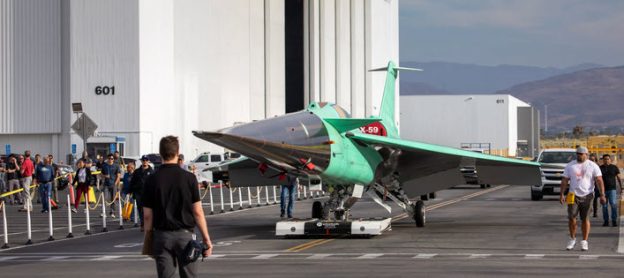In the launch event on January 12th, the agency shared plans to test over US cities to see if it’s quiet enough by engaging ‘the people below’. NASA has unveiled a one-of-a-kind quiet supersonic aircraft as part of the US space agency’s mission to make commercial supersonic flight possible. In a ceremony with Lockheed Martin Skunk Works in Palmdale, California, on Friday, NASA revealed the X-59, an experimental aircraft that is expected to fly at 1.4 times the speed of sound – or 925 mph (1’488 km/h).
NASA postpones plans to send humans to the moon
The aircraft, which stands 99.7ft (30.4 meters) long and 29.5ft wide, has a thin, tapered nose that comprises nearly a third of the aircraft’s full length – a feature designed to disperse shock waves that would typically surround supersonic aircraft and result in sonic booms. In attempts to further enhance the aircraft’s supersonic capabilities, engineers positioned the cockpit almost halfway down the length and removed the forward-facing windows typically found in other aircraft.
The aircraft also features an engine mounted on top as well as a smooth underside to prevent shock waves from forming behind the aircraft and causing sonic booms. The X-59 is set to take its first flight later this year and then its first quiet supersonic flight, NASA said. The agency added that once test flights are completed, the X-59 will fly over several cities across the US that have yet to be selected and will collect public feedback on the sound it generates. For the last 50 years, commercial supersonic travel over land has been banned in the US because of public concerns over the explosive sonic booms that could be heard from miles away. Source: ‚NASA‚.



